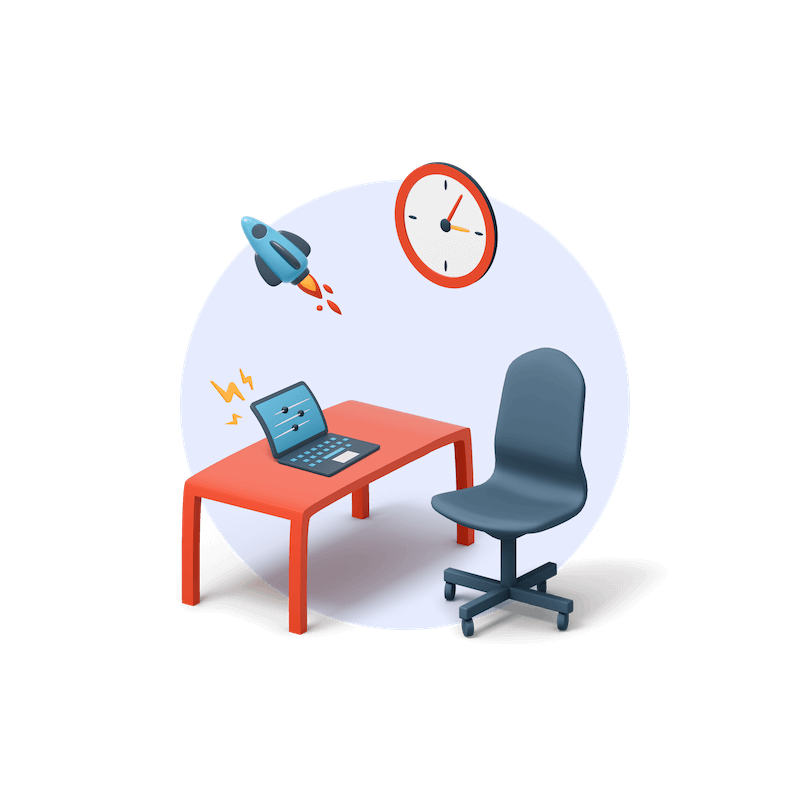For many people, it pays to keep track of things that contribute to their health, happiness, or success. Many people count their money before deciding to spend some of it. Some count their calories before sitting down to eat. Most people check the fuel in their car before deciding where to go. So, it makes sense for everybody to look into managing their time instead of cramming everything they need to do. This is where time mapping can help.
Table of Contents
What is Time Mapping?
Organizing your schedule can be a frustrating exercise. Initially, it’s exciting to create a To-Do list of all you need to accomplish for a given period. Often, you’ll put in as many entries as possible for your daily, weekly, or even monthly activities. Soon as you follow this list, you begin to find yourself hard-pressed to keep up with your tasks. A day or two later, you begin to realize something.
Getting bogged down in a single task soon affects the rest of the day. The day then affects the rest of the week, which affects the rest of the month. Next thing you know, your planned schedule is shot to pieces. If you feel that the above scenario describes how you manage your schedule, then maybe time mapping is something you should seriously consider.
In essence, time mapping allows you to take better care of how you spend your time. Everybody has exactly 24 hours each day to do what they want. However, this 24-hour budget won’t change even if you have an urgent task you need to finish. This is why it’s important that when laying out your individual schedules, you’ll have to keep track of your overall plans for the day. You’ll need time for work, for play, for family, for yourself. By mapping how you use your time in a more coherent and orderly way, you can better control the use of this precious, limited resource.
What’s the Difference Between Time Mapping and Time Blocking?
Aside from time mapping, another phrase appears every time the subject is about managing hours in a day: time blocking. While most people will invariably interchange the two terms, there is actually a hierarchy governing their use. Think of time mapping as the overall idea. It’s the big picture that you need to do in order to determine your priority, necessary, and required tasks. With the overall picture set up, the individual can now perform time blocking: the allocation of chunks of time to accomplish absolutely necessary tasks for the given period.
In addition to time mapping and time blocking, there’s also the concept of timeboxing. Simply put, timeboxing is setting limits on the time allocated for each task. This ensures that all listed tasks get enough time. If not, most people would run the clock from the highest priority to the lowest priority. They often end up running out of time for the tasks at the bottom of the list.
👉 Related: Free Printable Time Blocking Templates
Is Time Mapping Exclusively About Managing Your Work?
If you’re a workaholic who only takes breaks to eat or sleep, then the entries should consist of work 100%. Thankfully, most people know better than to live to work all the time. As such, time mapping only shows the overall picture. This means you should also incorporate time allocations for things other than work. This includes quality time with the family, recreation and exercise, vacation plans, and personal time. Otherwise, you’ll just end up with a work planner. Ultimately, a work-only time map means that your schedule for family and other stuff is at the mercy of whenever you finish work.
The Benefits of Time Mapping
Does time mapping actually work? If it does, what are its benefits? For starters, time mapping gives you a holistic view of how you spend time in general. Broken down into major areas (work, family, personal, health and fitness, etc), you can see which parts of your life might be taking too much of your waking hours. At the same time, you also get to realize which areas need more attention.
Identify Priorities
Time mapping allows you to recalibrate your priorities and create a more well-rounded schedule. In fact, this system provides the information needed to finally decide which things matter more to you. So if you think that a better work-life balance can make you more productive, you can revisit your daily activities and make the changes. For example, you can choose to cut down on work hours and pencil in enough time for family activities, recreation, or even self-learning.
Improve Time Management Skills
Ultimately, time mapping can also improve your time management skills. Once you get a better idea of how you spend your time, it’s easier to tell others how much of it you can spare. Instead of simply committing to a team that needs your help, you can provide an accurate estimate of how many hours per day or week you can spare.
Visualize Tasks Better
Time mapping also allows you to look at projects from a bigger perspective. It allows you to visualize not just the individual components but also how each one affects the others. This means that with time mapping, you can better determine which tasks to prioritize in order to complete the later ones.
Manage Project Dependencies
Doing so allows you to break down even the most formidable project into more manageable steps. Once you recognize the project’s dependencies, you can plan the execution better and avoid delays due to incomplete areas.
How to Create a Personal Time Map
Creating a personal time map requires a lot of preparation beforehand, as it’s essential to take some time to assess your overall situation. A good suggestion would be to list down your activities for a week to get a general idea of how you actually spend your time.
Ask yourself what is your definition of time well spent? How do you ration out your waking hours in terms of work and non-work activities? To give you an idea, compare your ideal ratio of work to non-work time with your current ratio. This can then lead to the second, more important question: “Do I want to change how I spend my time?”
Once you have the answer to the question above, you are now ready to flesh out your own time map.
List Your Activities
Check your listed activities and start identifying categories where each one can fall into. These categories usually consist of work, family and friends, personal time, recreation and fitness, improvements, etc. Make sure that a category covers all your listed activities. Finally, assign a color for each category. This will help distinguish each category from others so you can see clearly how much time you spend on work and other activities.
Assign Categories
Start filling in your activities and assigning them to the applicable category. Remember to apply the color codes you assigned during the previous step. Around halfway through this part, you’ll notice that you are probably trying to fit too many activities into your time map. You might want to do one or both of the following options:
- Set your priorities. Some tasks will be more urgent than others, so keep that in mind. You’ll have to choose which ones should take precedence.
- Spread out your activities. Instead of performing a task every day, dole out the tasks into manageable items. You might want to consider assigning them to fewer days such as twice a week or every few days.
Avoid Falling Victim to Parkinson’s Law
Identify tasks that take too long to complete. Some tasks might fall victim to Parkinson’s Law, which states that work expands to fully occupy its completion time. Instead of meekly submitting to Parkinson’s Law, evaluate your tasks and double-check your original time allotments.
Review Your Time Map
If necessary, edit the entries so that you can block chunks of time into activities under the same category. Time blocking can help you focus on a particular activity without having to constantly switch between categories. For example, you can assign a block of time for working hours similar to what an office does. In between, you can sandwich in breaks such as lunch or exercise. Bookend your days with time for family/friends or time for yourself.
Time Mapping is a Continuous Process
At this point, test your new time map and check how you fared after a few days. Were you able to stick to your assigned schedules? Did you manage to accomplish all the things you wanted? Or, were you still bogged down by the things you need to do?
The beauty of time mapping is its dynamic nature. You can continually improve your entries until you can come up with a balanced schedule that fits exactly what you want. You’ll notice that whenever you complete your work assignments within the allotted time, you’ll get more opportunities to do the non-work activities you want like exercise or family time. At the same time, you’ll also notice how some tasks seem to require less time than you previously estimated. Continually refining your time mapping system can help you increase your productivity and efficiency.
Time Mapping Examples and Free Templates
Outlining your schedules can come in different forms. Here are a few time mapping samples that can help you give an idea. For those who would like to start on their time mapping immediately, we’re including some free templates to go along with the various samples.
Daily Time Map
The daily time map provides a snapshot of how a person works on a typical day. While a weekly time map is advisable to provide a more well-rounded approach, a daily time map can serve as a one-off approach for people who only require a daily schedule every now and then.
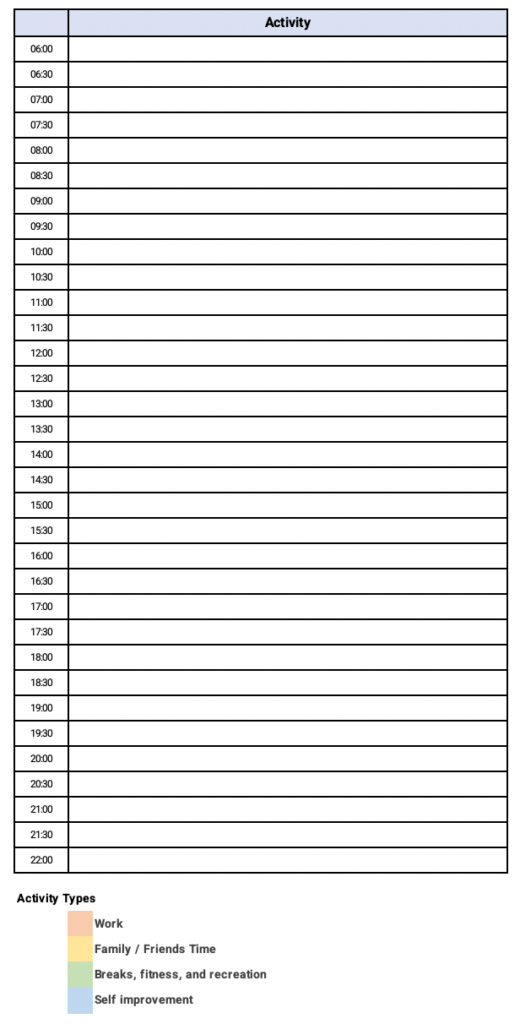
This type of time mapping can also serve as an introductory trial for people who remain undecided if they want to implement a time mapping system.
Weekly Time Map
A weekly time map shows a better, more accurate picture of how you allot your time in pursuit of various activities. The weekly time map helps you distribute your activities so that you don’t have to unnecessarily repeat scheduling the same task. Weekly time mapping also allows you to look into your weekend activities, which often get filled up with non-work activities. This helps you achieve a better work-life balance as well.
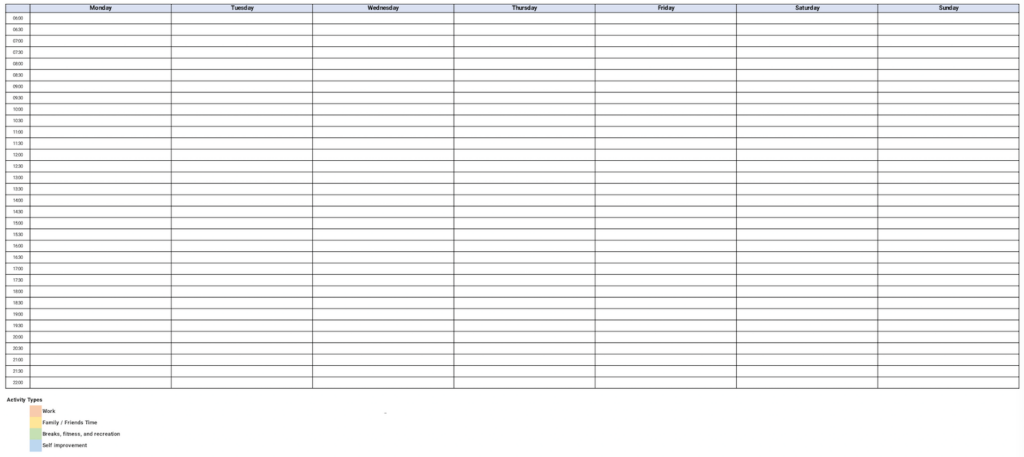
Bi-weekly Time Map
A bi-weekly time map helps you plan out activities based on a typical bi-weekly pay period. This allows you to map out tasks that can differ between weeks, especially timesheets and payroll processing. Bi-weekly time mapping also lets you work on your chores and personal projects that take more than a week to complete.
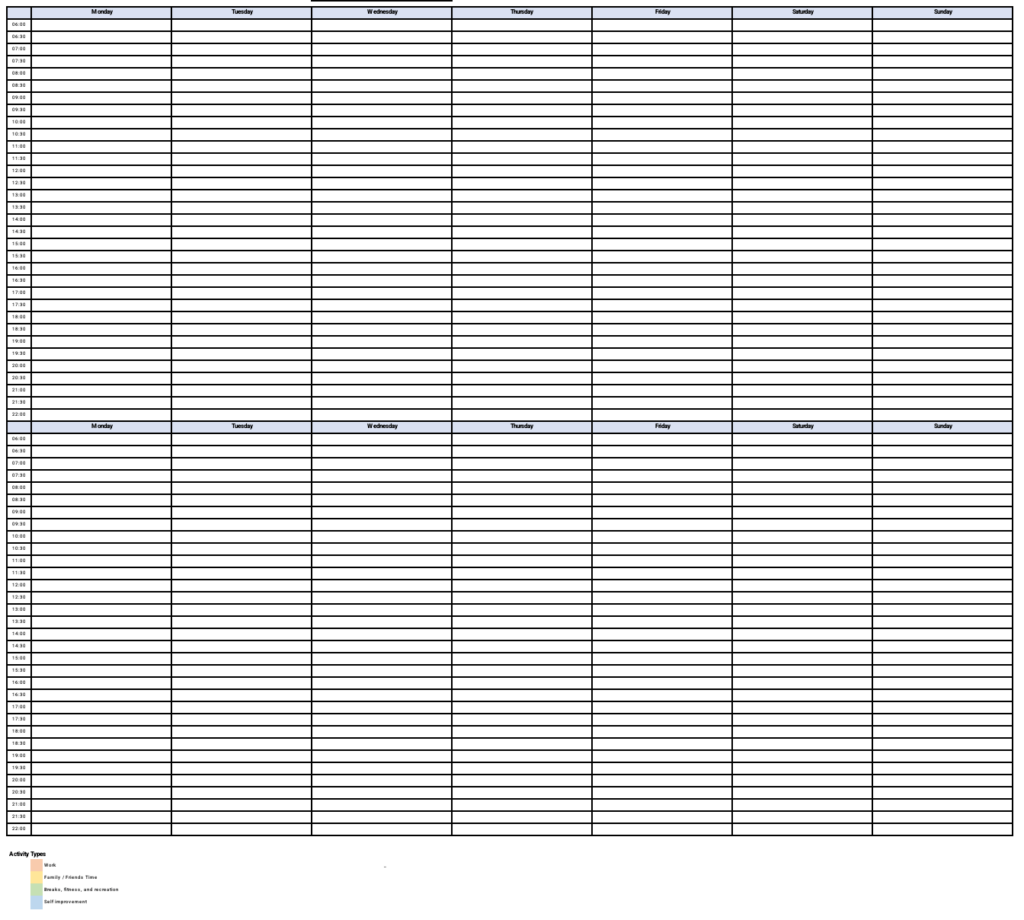
Monthly Time Map
A monthly time map contains the most comprehensive snapshot of how you perform time management on a long-term basis. This type of time mapping works best for people with projects or tasks that usually take more than a week to accomplish. Monthly time maps also incorporate activities that occur occasionally, such as monthly visits to family members or monthly club meetings.
Time Mapping Software
Creating a time map manually can be too time-consuming. There is plenty of software available to help you create a time map faster. Plus, many automated features can actually help you track the time spent on each task more accurately.
Here are some of the more popular apps that can help you create custom time maps:
Google Sheets

Google Sheets is free spreadsheet software that allows you to create and customize time maps easily. The software is free, it’s cloud-based and it can add simple time-tracking features to your time map to help you stay within your time budget. As the app is cloud-based, you can access Google Sheets anywhere simply by logging in. This is a very convenient feature that lets you monitor your tasks and update your time maps anytime, anywhere.
Google Calendar
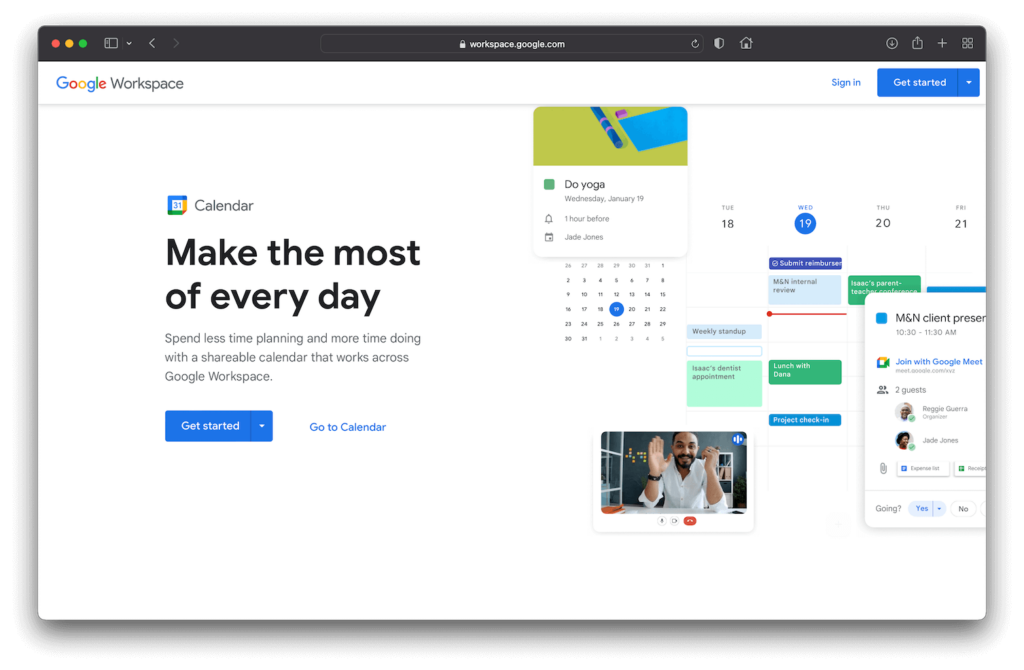
Like Google Sheets, Google Calendar helps you create free time maps. Its main draw is that your time mapping entries will automatically integrate with the calendar system. This means you get automatic alerts whenever a task is up.
Microsoft Excel
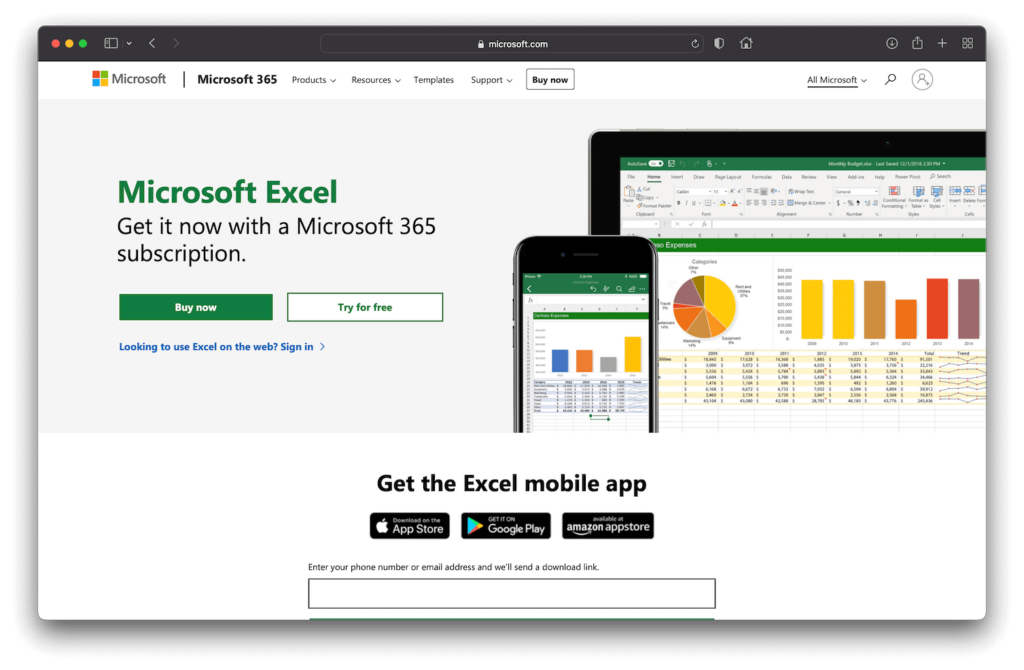
Microsoft Excel remains the ultimate spreadsheet software in terms of features and functions. This is why creating a time mapping system using Excel shouldn’t take up too much time and energy. Thankfully, Microsoft went with the times and now provides cloud-saving features so that you can access your files online as well.
Microsoft Outlook

Microsoft Outlook is a pioneer in organization and scheduling software. Despite the presence of many competitors, Outlook remains a strong favorite among task-oriented professionals and enterprise clients. Tightly integrated with Microsoft Office, Outlook allows you greater control over your project management activities and lets you manage your daily tasks with greater efficiency.
Any.do

Any.do is a productivity app that helps you organize your tasks, whether they’re personal or professional in nature. The application shows your daily tasks neatly listed in order of importance so you can take action immediately. Even better, any.do works not just with PCs or smart devices, you can also access your task list via your smartwatch.
Fantastical
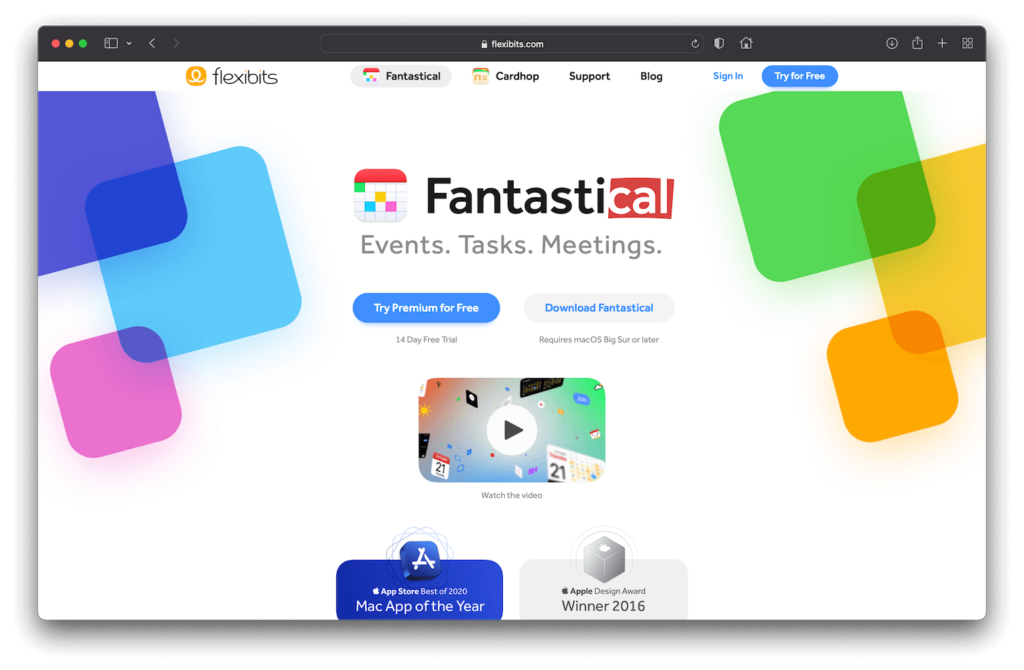
Flexibits’ Fantastical app is an award-winning calendar and productivity app that syncs all your tasks across your computers, smart devices, and even your smartwatches. Fantastical provides one of the easiest and quickest ways to create calendars and schedule tasks. It also notifies you of incoming tasks and alerts you if you want to move an overdue one to a later date.
Quidlo Timesheets
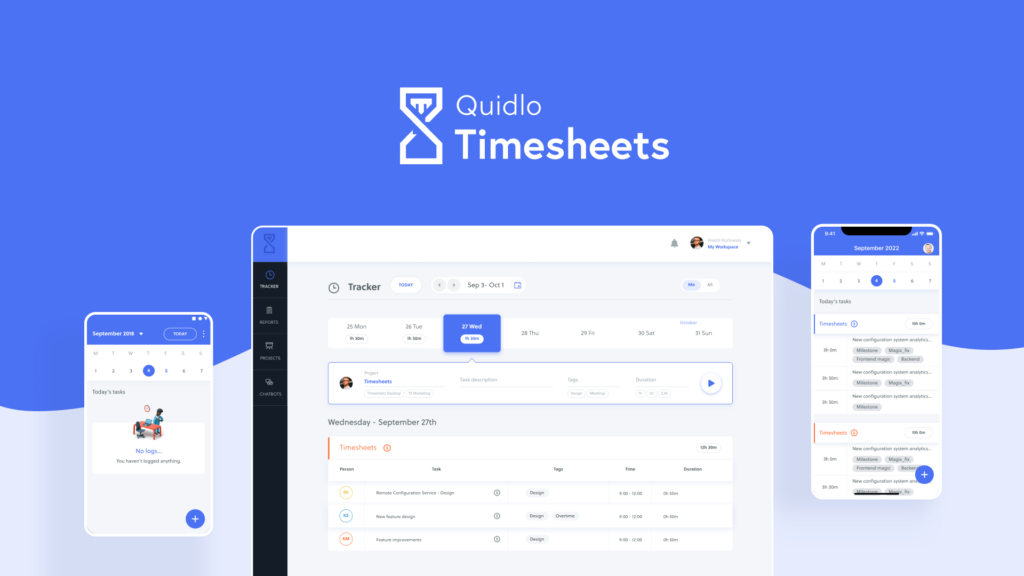
Quidlo Timesheets is a streamlined time-tracking app that allows you to manage your schedules and monitor your progress. Apart from time tracking your tasks, Quidlo can also generate reports and insights on how you spend your time on each task. This information can help you make the necessary decisions so that you can further improve your time management skills.
Time Mapping Is Your Guide, Not Your Guard
When creating your time map or implementing a time mapping system, remember that your objective is to get a better handle on how you handle the time you have. Time mapping gives you the opportunity to know more about how you spend your waking hours and see if you can plan your activities efficiently.
Instead of just blindly following the schedule you make, make note if your original plans are actually working. Check for flaws in your schedules and see if what you need to do tends to consume all the time you have available. Time mapping is a guide in your journey, so you can continuously make improvements to how you dole out your minutes and hours.
Unlike other resources, time is finite. Making the most out of the time you have means having enough of it for everything you want to do. YOu should have enough time not just for your work, your friends and family, or your chores. You should also have time for you to continually improve yourself. If you can answer positively to the question “who’s got the time,” then you may be in an enviable position. If you don’t have the time for things that matter to you, then maybe you should consider starting time mapping.
Help Manage Your Time By Using Quidlo Timesheets
Quidlo Timesheets is a great solution that delivers on its promise of simple and flexible time tracking. Learn more about how Quidlo Timesheets makes time tracking an easier and inexpensive solution. Visit Quidlo.com and sign up for a free copy! If you have any questions about how we at Quidlo can help you, we’ll be happy, we’ll be very happy to hear from you!


